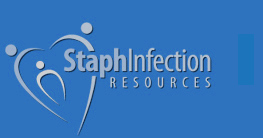Here’s something to ponder. Norway has one of the lowest MRSA rates out of any country in the world. Japan, the US and some Southern European countries have the highest MRSA infection rates.
So, what is Norway doing right?
Since the development of antibiotics in the 1940’s, antibiotics have become the standard treatment for infections. Unfortunately, antibiotics have been over-used and misused around the globe. They’ve been prescribed for conditions for which they do not work. They’ve been administered to feed animals to fatten them up for market. Antibiotic resistance by many bacteria, including Staph aureus followed within a few years of the introduction of antibiotics.
In the 1980’s, because of rising antibiotic resistance, Norway decided to limit the amount of prescription antibiotics used by their doctors. Their doctors were educated on limiting the use of antibiotics most notably for conditions that antibiotics can not help against like colds and flu. They also became much more careful about using broad-spectrum antibiotics for infections, as MRSA bacteria are now immune to the effects of these antibiotics.
Norway also started monitoring the incidents of MRSA within its healthcare facilities, and it began isolating and treating those admitted who also had MRSA. They also have been reducing the amount of antibiotics given to their livestock.
By prescribing less antibiotics to people (and animals), there is less exposure of antibiotics to bacteria and thus, there are less chances for bacteria to become resistant. Remember, bacteria are smart. When we attack them with drugs, only the fittest survive and then they go on to create more bacteria that are now more resistant.
Higher MRSA rates correlated to higher antibiotic use
Higher rates of MRSA infections have been correlated to countries that prescribe more antibiotics. In Europe, antibiotics use rates vary differently from country to country. Between 1997 and 2002, France had one of the highest rates of prescription antibiotic use, and the lowest was in the Netherlands. As part of the study, higher rates of antibiotic resistance were seen in counties which consumed more antibiotics.
Interestingly, Norway also forbids pharmaceutical companies to advertise antibiotic drug products (or any other drug) directly to the consumer. They consider this an important factor in keeping the consumption of antibiotics lower.
Can we win the war against antibiotic resistance?
A few hospitals in different countries, including England, Japan and the US have started limiting the use of antibiotics as well as screening and isolating those with MRSA. This increased surveillance and monitoring of antibiotic use has helped reduce the number of hospital related MRSA infections at each facility.
Evidence suggests that reducing the amount of antibiotics prescribed reduces the incidence of antibiotic resistant infections, including Staph MRSA. Evidence also suggests hospitals that enforce surveillance of antibiotic use and the careful prescribing of antibiotics also reduce antibiotic resistance. Hopefully more hospitals and countries will follow in Norway’s footsteps to help reduce global antibiotic resistance and the formation of superbugs like MRSA.
To your best health,
Michelle Moore
Microbiologist and Natural Health Advocate
References:
1. The Lancet, Volume 365, Issue 9459, Pages 579 – 587, 12 February 2005, Outpatient antibiotic use in Europe and association with resistance: a cross-national database study. Prof Herman Goossens MD Matus Ferech PharmD, Robert Vander Stichele MD, Monique Elseviers PhD, for the ESAC Project.
2. NORM/NORM-VET 2009. Usage of Antimicrobial Agents and Occurrence of Antimicrobial Resistance in Norway. Tromsø / Oslo 2010. ISSN:1502-2307 (print) / 1890-9965 (electronic).
3. Tidsskr Nor Laegeforen. 2008 Dec 4;128(23):2730-3. [Meticillin resistant Staphylococcus aureus in Norway]. Elstrøm P, Aavitsland P.
4. J Clin Microbiol. 2005 May; 43(5): 2118–2124., American Society for Microbiology Dissemination of Community-Acquired Methicillin-Resistant Staphylococcus aureus Clones in Northern Norway: Sequence Types 8 and 80 Predominate
5. Norwegian Ministries National strategy for prevention of infections in the health service and antibiotic resistance (2008–2012)




